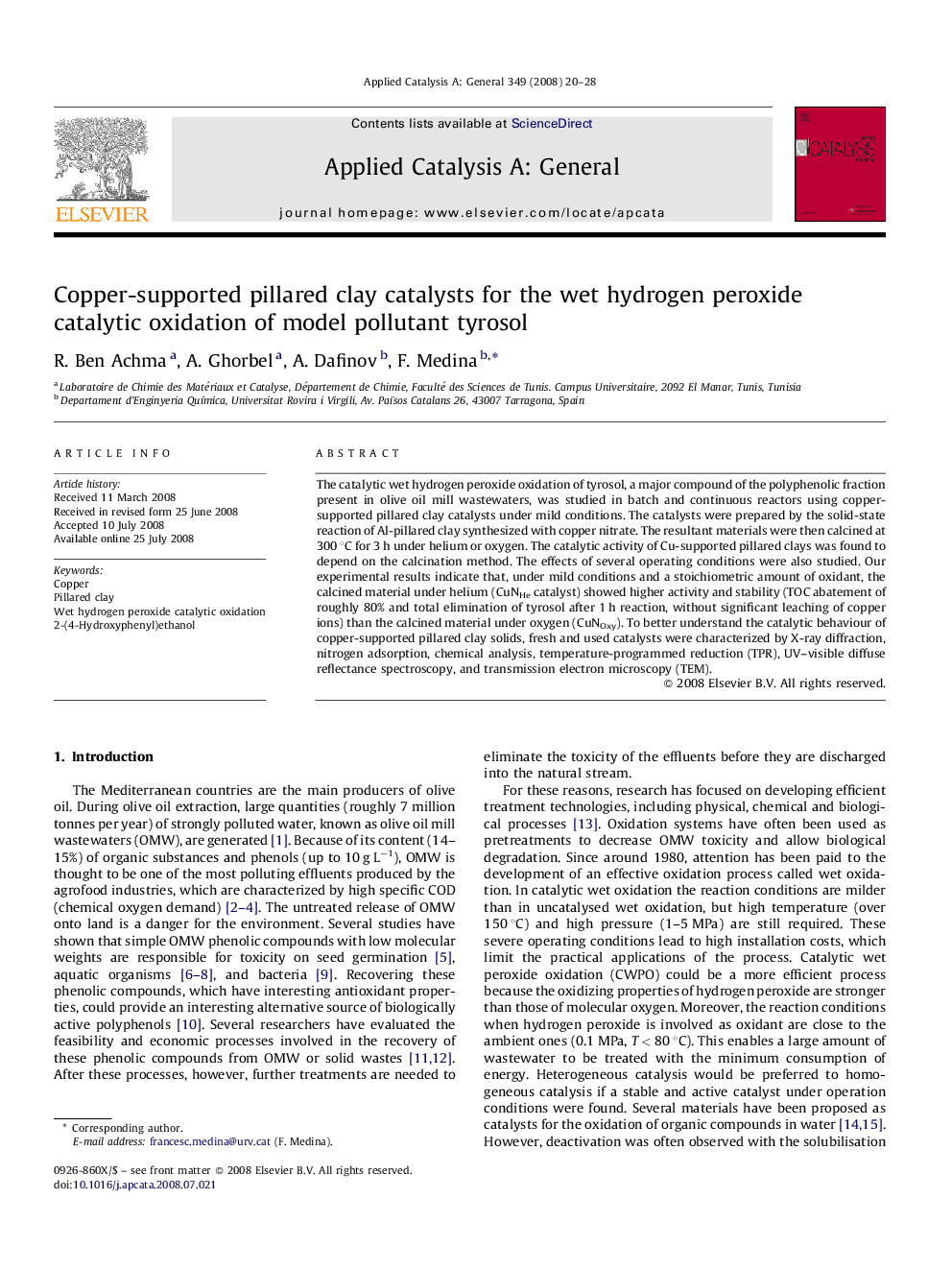| Article ID | Journal | Published Year | Pages | File Type |
|---|---|---|---|---|
| 42800 | Applied Catalysis A: General | 2008 | 9 Pages |
The catalytic wet hydrogen peroxide oxidation of tyrosol, a major compound of the polyphenolic fraction present in olive oil mill wastewaters, was studied in batch and continuous reactors using copper-supported pillared clay catalysts under mild conditions. The catalysts were prepared by the solid-state reaction of Al-pillared clay synthesized with copper nitrate. The resultant materials were then calcined at 300 °C for 3 h under helium or oxygen. The catalytic activity of Cu-supported pillared clays was found to depend on the calcination method. The effects of several operating conditions were also studied. Our experimental results indicate that, under mild conditions and a stoichiometric amount of oxidant, the calcined material under helium (CuNHe catalyst) showed higher activity and stability (TOC abatement of roughly 80% and total elimination of tyrosol after 1 h reaction, without significant leaching of copper ions) than the calcined material under oxygen (CuNOxy). To better understand the catalytic behaviour of copper-supported pillared clay solids, fresh and used catalysts were characterized by X-ray diffraction, nitrogen adsorption, chemical analysis, temperature-programmed reduction (TPR), UV–visible diffuse reflectance spectroscopy, and transmission electron microscopy (TEM).
Graphical abstractA new and simple method to prepare Cu-pillared clays is described. These materials are active and stable catalysts, at mild reaction conditions, for catalytic wet hydrogen peroxide oxidation of organic compounds like tyrosol in aqueous solutions. These catalysts result in a promising alternative to the Fenton homogeneous system without significant catalyst leaching and deactivation.Figure optionsDownload full-size imageDownload as PowerPoint slide
